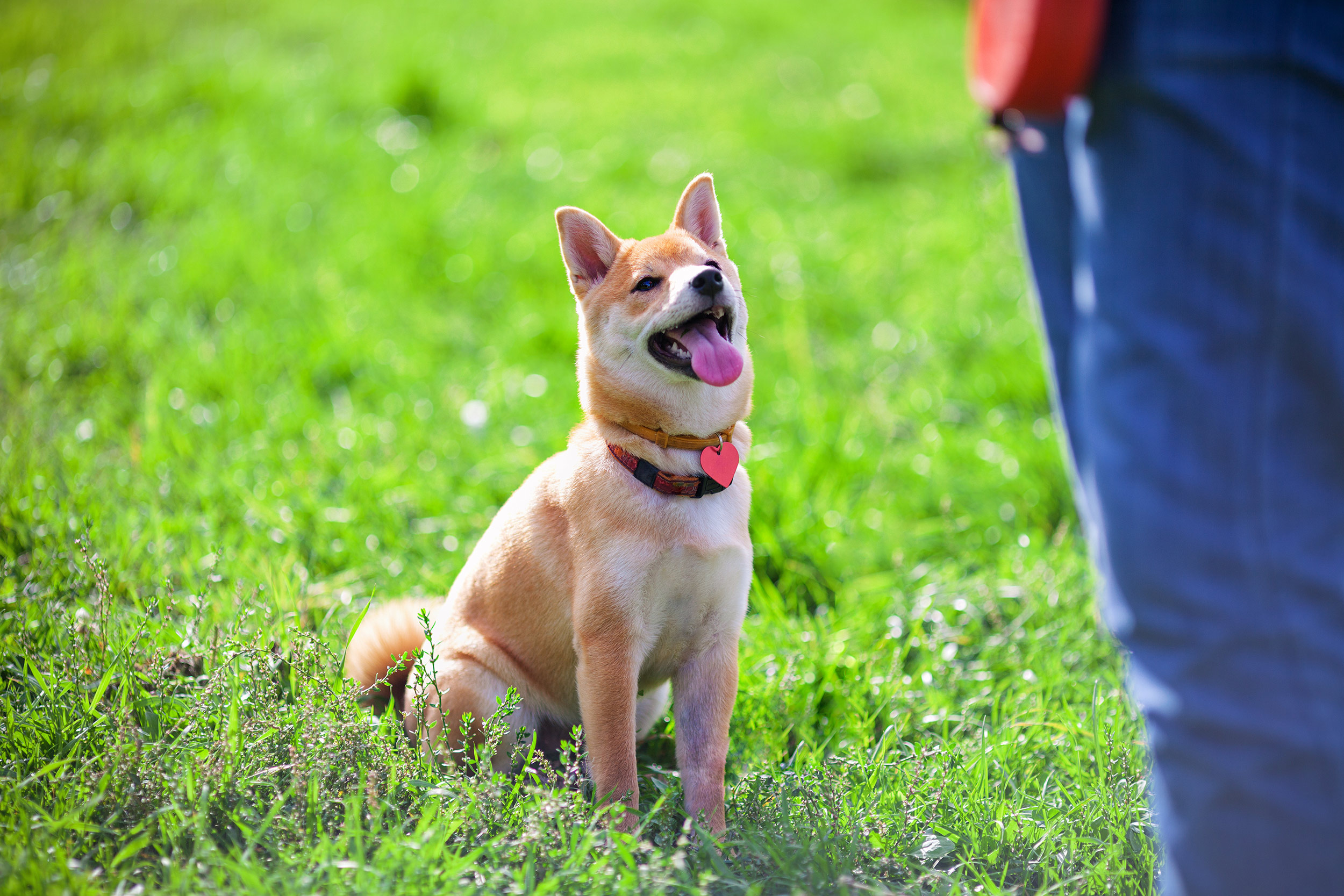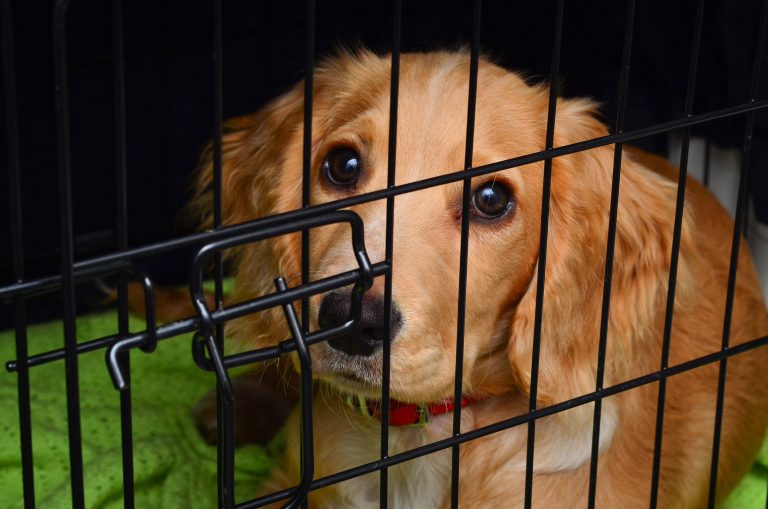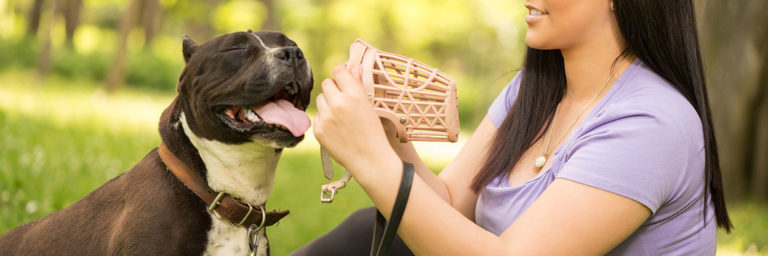Dog Training

Contents of Article
Owning a dog is more than just feeding your pet and taking him for a daily walk. In order to be a responsible dog owner, and to form a strong and lasting bond with your pet, you also need to engage in some basic dog training. There are many aspects of dog training that the dog owner must incorporate. In addition to socializing your dog he also needs to be housebroken and taught to respond to basic commands like “sit” and “stay”. If you are serious about training your dog you may also engage in certain training practices to enhance your dog’s mastery of the basic commands and extend them so that he responds to your commands even when they are given from a distance. Dog training can even extend so far as to include training for various dog sports like agility, flyball, lure coursing, and disc dog.
The Importance of Socialization
When you bring home a new puppy he will be too young to engage in any sort of formal training but it is never too early to start socializing your puppy. Socialization simply involves exposing your puppy to new things and new situations. The first two months of a puppy’s life are the most formative – this is when he truly starts to experience the world outside the breeding facility and it is when he learns how to respond to the world around him. When puppies are very young, they have a natural curiosity – it is during this period of time that socialization is most important. As your puppy ages, he will start to become more cautious, even nervous, of new things and new situations. If you fail to expose your puppy to new people, places, and things during the early weeks of his life then he may spend his adult years being fearful or anxious in new situations.
Socializing your puppy is very easy – all you have to do is expose him to new things. Some methods of socialization you might implement include taking your puppy in the car, introducing your puppy to family and friends, taking your puppy to the pet store, or setting up play dates with another puppy. The more people, places, things, and other animals your puppy is exposed to when he is young, the more adaptable he will be as an adult dog. Dogs that were not properly socialized as puppies are more likely to be aloof or fearful around strangers and they may be more likely to develop aggression toward other dogs – this aggression is often born of fear.
When socializing your puppy it is important that you do not do too much at once. Keep an eye on your puppy for signs of fear or anxiety – if the situation becomes too much for your puppy, give him a break and try again later. It is not recommended that you take your puppy to the dog park for socialization because this type of situation can be very overwhelming for a puppy. In addition to being easily overwhelmed by the presence of multiple adult dogs, your puppy could be at risk for contracting or spreading disease if he has not yet completed all of his vaccinations.
Housetraining a Dog
As your puppy gets a little bit older you can begin to housetrain him – that is, to teach him to do his business outside. When puppies are first born they have no control over their bladder or sphincter so it is up to the mother to help the puppies urinate and defecate. It isn’t until your puppy reaches 12 weeks old that he is old enough to control his bladder and sphincter – this is when you can begin housetraining. There are several methods of housetraining to choose from, each with its own advantages and disadvantages. Perhaps the most popular method of housetraining a dog is crate training. This method involves taking your puppy outside frequently during the day and confining him to a crate at night and when you are not at home to prevent accidents in the house. When used properly, this method of housetraining is highly effective and it is also fairly quick.
Another method of housetraining involves the use of puppy pee pads which can be used to train the puppy to do its business indoors but only on these pads. This method of training is often used by people who live in urban apartments with limited access to the outdoors. In some cases, this method of housetraining is used while the puppy is young and then crate training is used when the puppy is old enough to handle longer periods of confinement in the crate. It is up to you to decide which method of housetraining is right for your dog but, once you choose one, it is best to stick with it so your puppy does not become confused.
When to Start Training Your Dog
Ideally, you should begin training your dog as soon as you bring him home. If you have purchased or adopted a puppy, the first aspect of dog training you need to perform is to teach your puppy his name. You can do this by keeping a supply of small treats on hand and saying your puppy’s name throughout the day when he is playing or otherwise occupied. When your puppy gives you his attention in response to you saying his name, praise him and reward him with a treat. Eventually your puppy will learn to recognize his name and he will learn that good things happen when he gives you his attention. This is very important for when you start moving on to training your puppy for obedience.
Basic Obedience Training
As your puppy gets older you can start to think about training him to respond to basic commands. It is best to start with the “Sit” command because it plays upon a natural behavior that your puppy exhibits anyway. To teach your dog to “sit” you simply hold a treat in front of his nose, give the “Sit” command, then move the treat toward the back of his head so the puppy is forced to lower his bottom to the ground as his nose lifts to follow the treat. The “down” command follows naturally after “Sit” and it simply involves giving the “sit” command then moving the treat down to the floor between your puppy’s paws – he should be inclined to follow it and will lie down as a result.
Once your dog has the hang of the “sit” and “down” commands you can start to teach him to “come” and “stay”. These commands hinge upon your dog’s desire to come to you – it is important that you never punish your dog after calling him to you or he may be reluctant to come to you in the future. There are a number of ways to go about teaching your dog the “come” and “stay” commands – you can even teach him to respond to these commands from a distance. This is very important because there may come a time when your dog gets into a dangerous situation and you are not close enough to grab his collar. Being able to give your dog a “stay” or “come” command from any distance could actually save your dog’s life. Take for example the dog that bolts out the front door on day toward a busy street – the dog may not realize the danger he is in but if you have taught him to respond to a “stay” or “come” command from a distance you can keep him out of danger.
Strengthening Your Dog’s Mastery of Commands
Once your dog has learned to respond to the basic commands you can engage him in certain exercises to strengthen his mastery of those commands. One example of this is, of course, teaching your dog to respond to these commands from a distance. To do this you simply need to go back to the basic training sequence then progressively move further from your dog when you give the command. Eventually you will transition into issuing the command while your dog wanders around the yard or plays at the dog park. You should also teach your dog to respond to commands in the face of distractions – it may help to teach him a release cue. Teaching your dog a release cue can be very important. For example, if you live in a neighborhood near a busy street, you do not want your dog to go dashing out the front door – if you teach your dog a release cue he will wait by the door until you release him into the yard. This gives you time to make sure that the gate is closed or that the leash is firmly connected to his collar.
Phasing Out Food Rewards
In training your dog, food rewards are the most effective option for a number of reasons. For one thing, dogs love to eat. Another reason is that food rewards give off a desirable odor that helps to motivate your dog further. It is important that you do not overuse food rewards, however, for two key reasons. First, adding too many calories to your dog’s daily diet could result in weight gain which could be unhealthy for your dog. Second, some dogs become dependent on food rewards and they do not respond to the given command unless a treat is offered. For these reasons it is important to phase out food rewards after your dog has started to catch on during any given training session.
When you first start teaching a new command you should praise your dog and offer a small food reward each time your dog responds correctly. Once you are sure that your dog has identified the behavior in question, you can start to offer the food reward only every other time – you should still praise your dog for good behavior, however. Eventually you might try incorporating “life” rewards as a substitute for food rewards. For example, you might toss your dog his favorite toy or give him a few seconds of belly rubbing as a reward. The goal is to ensure that your dog responds to your commands each and every time, regardless of any reward or lack thereof.
Training Your Dog for Dog Sports
Many dog owners take their training a step further in training their dog for various dog sports. There are a great many dog sports to choose from including the following:
- Agility
- Carting
- Competition obedience
- Disc dog
- Dock jumping
- Field trials
- Flyball
- Hare/lure coursing
- Herding
- Hunting
- Musical canine freestyle
- Obedience
- Retrieving trials
- Skip dog
- Tracking trials
Training your dog for dog sports is beneficial for a number of reasons. First, it is a great way to strengthen your bond with your dog. It is also a wonderful opportunity for very active dogs to work off their excess energy. Highly active dogs also typically require a great deal of mental stimulation and training for dog sports helps to meet that need.
Dog training is a lifelong venture for the dog owner because you should always be seeking new ways to strengthen your relationship with your dog. Once your dog learns to respond to basic commands you will likely use those commands on a daily basis and you will build upon them to teach your dog more complex tricks and commands. Training your dog helps to not only give you and your dog a stronger relationship, but it also helps to keep your dog’s body and mind active and healthy. Your dog will always be eager to spend time with you and to learn new things, so never stop training him!





